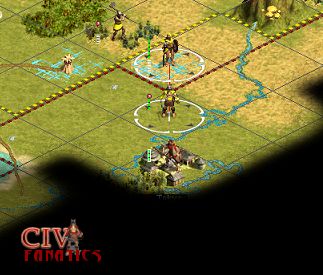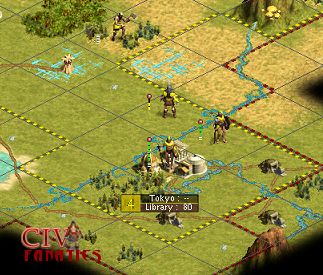 GOTM9 -
Expanding the Nagoya Beachhead
GOTM9 -
Expanding the Nagoya Beachhead
|
GOTM9 Index Items below this point
Known Bugs and Glitches |
The port of Nagoya was now firmly in Egyptian hands and with each passing turn additional combat units would be landing to strengthen the main attacking thrust. In 250 AD, the primary tasks near Nagoya included reconnaissance and consolidation in preparation for a renewed set of attacks that help to bring all these troops back together with the central advance in preparation for a final drive on the Japanese capital. In 260 AD, Tokugawa’s counterattack against the central advance gave clear indications that the defenses to the southeast of Nagoya would be weakened since the Japanese forces could not possibly be in two places at one time. Advancing forward from Nagoya
Closing in on Tokyo Immediately to the east, a raging battle was in progress and in real life the sounds and signs of war would have been heavy to excite the bloodlust in the advancing units and feelings of anxiety in the Japanese defenders. The town of Tokyo emerged from the fog of war as our first units reached its outskirts and we could see that the coming battle would be very hard fought. Tokyo was located on a grassy plain and surrounded on three sides by rivers that gave the defenders and additional 25% defensive bonus. The only route open for an attack without giving up the extra defensive advantage, would be to move units in close to the town and then cross the northern river and attack from the open grasslands northeast of town. Our fast attack units (war chariots and horsemen) would be able to cross the river and then attack using this open route. Our heavy foot units would have to force a river crossing and attack directly into the town. The urgency in forcing the attack was driven by my desire to keep up the coordinated attack schedule that was designed to strike while Tokugawa was occupied in the desperate defense of Edo.
The image at left, shows the positions of the Egyptian units after Tokyo was captured in 280 AD. Two of the three swordsmen died in the attack and one of the fast attack units died instead of retreating. Two other fast attack units were badly maimed to the point that they would require four turns to heal and return to an active role in the war. In total, the Egyptians lost 16 hit points worth of military units to destroy 6 hit points of well entrenched defenders. In retrospect, this attack may have been a bit premature and rushed. I should have used the war chariots to provide a reconnaissance screen as the entire force crossed the river into the space you see occupied by the regular spearman in the picture of the positions after the attack. From this position, our spearman could have attacked directly into the town against the defender without incurring the river defense penalty and that would have increased their success and survival rate. No other Japanese units were revealed in the surrounding terrain and no counterattack ever materialized, either from the east of from units coming up from Japanese frontier territory further to the south.
A
sideshow in the far east (The taking of Matsuyama) The battle for Matsuyama was another tough round of combat against entrenched spearmen defenders and three of the seven attacking units were lost in that battle including one of our few precious elite units. The hard won victory at Matsuyama cleared the way to provide an overland connection route between the horse denial landing forces at Satsuma and the rest of our military forces. In total, the year 280 AD was militarily very rough on the Egyptian forces. We captured two additional towns but lost six critically important units and ended up with nine units that were heavily damaged. With the exception of the battles around Edo where our forces were massacring large numbers of Japanese units in open terrain, 280 AD was recorded in hieroglyphics and frescos as the low point in the campaign to turn Japan into a footnote to history during GOTM9.
Other related topics:
|
 ©
2002 by cracker@CivFanatics.com
©
2002 by cracker@CivFanatics.com
All rights reserved. Please read the Terms
of Use.
Send mail to our webmaster with technical
questions about or potential problems with this web site.


